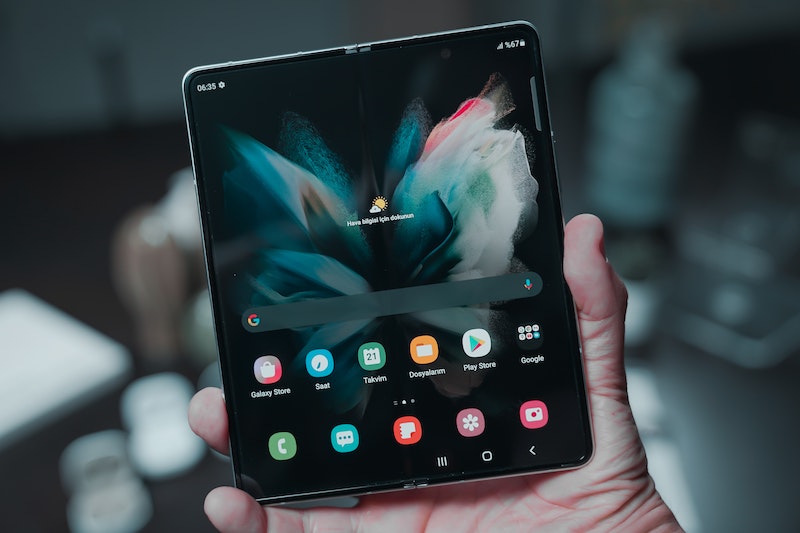If I May Be So Fold: How Samsung Is Making the Foldable Phone Mainstream

Paving the way in smartphone innovation, Samsung phones have come up with something revolutionary - foldable touchscreen smartphones. Whilst foldable phones might have been around for a little while, the newest generation are garnering more mainstream interest than their predecessors.
So, if we may be so ‘Fold’, here is how Samsung is making the foldable phone mainstream.
Samsung foldable phones
Samsung has two categories of foldable phones on the market at the moment: those that fold in half vertically, known as the ‘Flip’ series, and those that fold in half horizontally, or the ‘Fold’ series.
Samsung Flip phones are somewhat comparable to the flip phones of the early noughties, except, of course, they have a touchscreen. When opened, a Flip is around the size of a typical smartphone, which can then be folded into a perfectly pocket-sized square.
On the other hand, Samsung Fold phones are more comparable to a tablet computer. When opened out, the interior screens can be used as a tablet, or they can be folded up, using the third, exterior touch screen as you would a typical smartphone. The phone can also be folded to an angle, allowing them to stand freely - perfect for video calls.
So, how does Samsung plan to make it mainstream?
1. Compatibility with the S Pen
The S Pen has before only been compatible with the Samsung Galaxy Note series and the Galaxy S21 Ultra. However, both the Flip and Fold series’ are almost made to be perfect for the S Pen - there is so much you could do with this input device.
Thus, it is unsurprising that Samsung is looking to make the S Pen compatible with both the Flip and Fold series phones, whether it comes as standard or as an optional extra. With this compatibility, these foldable phones will have numerous fantastic applications, appealing to a wider range of mainstream users.
2. Increased app support for split screen
As these phones can fold in many different ways, and thus show content on different screens, it goes without saying that many apps may not be optimised for such devices - especially the seamless switching in and out of split screen, or moving to the internal screens once the device has been opened.
Noticing this, Samsung is reportedly working with Google and its app developers to make sure that popular apps and services are optimised for foldable phones. They are also reported to be growing their own app offerings to ensure seamless usability.
3. Affordability
Firstly, a disclaimer - foldable phones are not cheap! However, the longer these phones are in existence, their prices are likely to continue to drop, as manufacturing methods will have been tried and tested.
The Galaxy Fold 3 5G will set you back a whopping £1,599.00, whilst the Galaxy Flip 3 5G is only £949.00. Under a grand, the Galaxy Flip 3 is not much more expensive than their newest S series models, making them an affordable price point for loyal Samsung customers.
Final Thoughts
Samsung is quite clearly committed to bringing foldable phones into the mainstream. Cool, sleek, and with innumerable practical applications, foldable phones have the capacity to make our lives a lot easier. However, foldable phones still cost a pretty penny, so may not be fully absorbed into the mainstream until the masses can afford them.
Photo by Onur Binay on Unsplash

